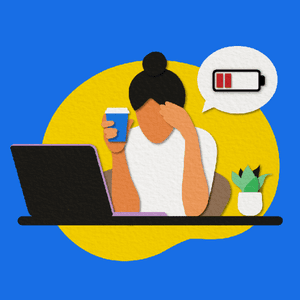This back-to-school season, teacher mental health is top of mind for school and district administrators. In a May 2022 article EdSurge reports, “teachers haven’t just reached their breaking point, but surpassed it, further imperiling a profession that has long struggled with low pay and declining morale.”
Widespread burnout and stress
According to a poll from the National Education Association, 90% of educators consider burnout as a very serious or somewhat serious issue. And the solution seems to be leaving the classroom, with 55% of educators saying “they are more likely to leave or retire from education sooner than planned.” As teachers look to change professions to protect their mental health, administrators are investigating new ways to address burnout and retain their staff.
Based on 2021 survey findings, RAND recommends “involv[ing] teachers in developing districts’ responses to reducing teacher stress.” One such response to consider is giving teachers more flexibility and autonomy over their schedules. This flexibility can come in the form of normalizing taking PTO and mental health days during the school year.
But, even when teachers need a break, it can be hard to leave their classroom when they don’t know what they will return to. Ultimately, a classroom teacher remains responsible for their students’ learning outcomes, so taking time off could have the adverse effect of increasing their stress and anxiety.
A proactive approach to teacher mental health
If a school or district normalizes teachers taking time off during the school year, then they may be able to predict regular points in the year when teachers need a mental health day, such as after standardized testing. Thinking about classroom vacancies in this way can help schools and districts develop a proactive plan for classroom coverage and consistent instruction.
This is where an annual substitute teaching strategy comes into play.
Instead of thinking about substitute teachers as a solution to a last-minute problem, consider anticipating when they will be needed and hiring them in advance. Roving substitutes, for instance, can report to a school for an extended time and cover classes as needed. Substitutes hired in this way are more likely to integrate with your community and avoid the “substitute teacher effect.”
When a trusted colleague takes over a class, it’s easier for a teacher to disconnect without concerns over keeping student learning on track. This way, their time off is more restorative, reducing potential burnout and increasing the likelihood of retention.
Substitute teaches: a piece of the puzzle
As is always the case in education, there is no silver bullet when it comes to solving the problem of teacher mental health. A proactive substitute teaching strategy is one part of a matrix of solutions that must be implemented to improve the experience of being a teacher.
And even in a perfect world, where all of these potential solutions are in place, supporting teacher mental health will still require time and energy. When it comes to substitute teachers, know that Swing is here to help take some of that work off your plate. With Swing, it’s easy to find and hire roving subs so you can focus on the needs of your full-time staff.





